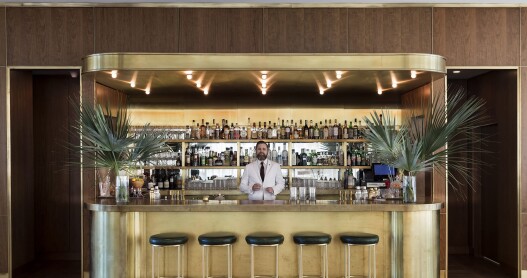Overview
When’s the best time to go to Venice?
Each season has its intolerable moments of high-impact tourism, making it a pick-your-battles sort of destination. Some say to visit Venice in the winter, but prepare to find many shuttered shops and hotels, and the human-traffic nightmare that is Carnival. Summer visits to the lagoon can be a delight, but the prices and the wet heat soar to their highest rates of the year. While tourism remains fairly high during spring (April-June) and autumn (September through early November), the weather is much more pleasant, and the light changes from tawny yellow to bright white, lending an enchanting color to the ancient architecture and the watery thoroughfares of the city.
How to get around Venice
Venice’s Marco Polo airport is about 20-30 minutes, depending on traffic, from downtown via the ACTV express bus, which costs about $9. Private water taxis will collect you from the airport and deposit you in front of your hotel for a fee that fluctuates annually but seems to hover around $170.
The public transportation system in Venice, ACTV, operates along the Grand Canal. It connects passengers to the major points of interest including the Piazzale Roma bus station, S.M. Novella train station, and landmarks like the Academia Bridge, Rialto Bridge, and St. Mark’s Square. ACTV also services other lagoon destinations like the Guidecca, Burano, and Murano. Water taxis and gondolas that ferry travelers across the Grand Canal are also available.
Can’t miss things to do in Venice
- A meal at L’Arco, a Venetian bacaro, or snack bar, almost exclusively a locals’ breakfast and lunch spot. Prosecco and spritzer are the protocols, and the typical Venetian snacks like truffle-infused cheese crostini are—without fail—fresh, local and seasonal
- A visit to the 14th-century Doge’s Palace lets you see how the ruling class lived and gives a look at some of the finest art the city has to offer
- An evening stroll across the Piazza San Marco to see it at its most magical
- An Ecology of Venice tour organized by our travel partner, Context, and led by scientists who can shed light on how this floating island came to be and what its future may hold
- A nighttime ride on the Grand Canal, whether by private boat or one of the public water buses
Food and drink to try in Venice
International cuisine hasn’t yet taken hold in Venice. The options here range from local Venetian fare to regional Italian pasta and seafood dishes. You’ll find a smattering of bad Chinese restaurants, and one good but expensive Thai restaurant that recently opened in the new Aman Resort. Local specialties are the Venetian snacks, cicchetti, which are usually small pieces of toasted bread topped with baccalà cream, whipped truffle cheese, and a million other variations of toothsome nibbles. During holidays like Carnival and Christmas, special desserts like fritelli (basically a fried cream donut) and panatone, a light cake with candied fruits, appear for a short time to celebrate the holiday.
Culture in Venice
All corners of Venice have cultural significance and intrigue, from the ad hoc bridges linking the city’s 118 separate islands to iconic public spaces like Piazza San Marco and Rialto. If pressed for time, it’s a good idea to see at least one or two treasures from each neighborhood. In Castello, check out the Arsenale district and the Museo Storico Navale di Venezia to learn about the city’s maritime empire. In San Marco, the Museo Correr holds a bevy of fascinating Venetian art and rotating international exhibitions. Santa Croce would be a shame to miss, and visiting the Scuola Grande di San Rocco is a must. The same applies to the new Prada Foundation in San Polo. The Accademia Museum in Dorsoduro, though usually very busy, is an absolute gem, and since its restoration by the nonprofit Save Venice Inc., it’s now one of Venice’s hottest tickets.
Venice is a hive of cultural activity and offers a seemingly unending lineup of festivals, fairs, and street parties. The Venice Film Festival, Carnival, and the art and architecture Biennales are the most famous, and tend to last between two weeks and four months. But other less-frequented though equally entertaining events include the feast day Festival of San Marco in April, and the September Regatta Storica, a procession of ornate boats throughout Venice’s main waterways.
Local travel tips for Venice
What don’t they know? Venice is a small, insulated city made more intimate by its completely pedestrian layout. The locals know where to eat. They know the alley shortcuts that save you 15 minutes on your commute. They will tell you to abide by the high water alarms or risk getting caught by rising waters. If you’re looking for the best gin and tonic in town, they will direct you to the lobby bar at Hotel Londra Palace or suggest, only for the view, to consider lunch on the roof terrace of Hotel Danieli.












